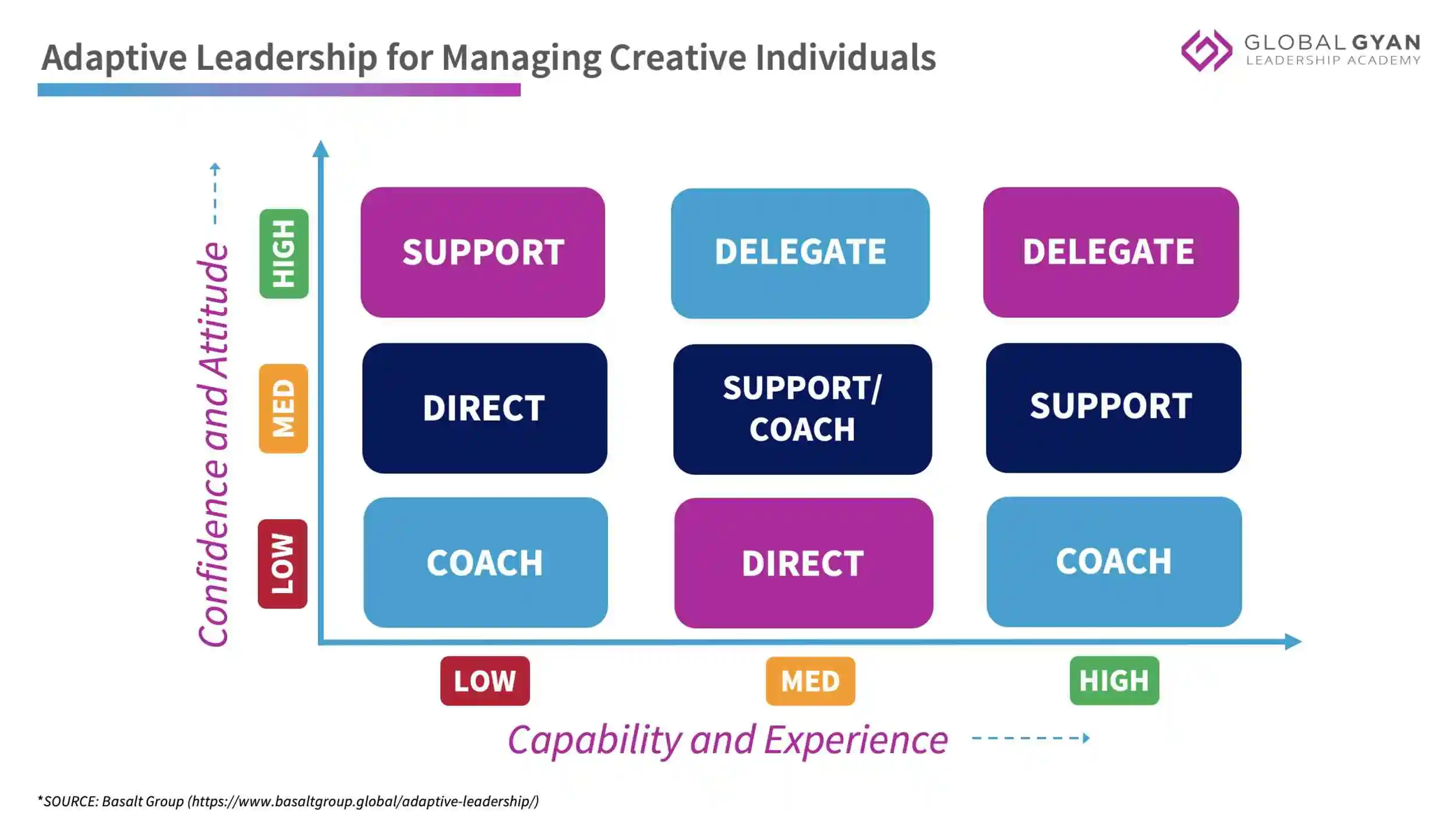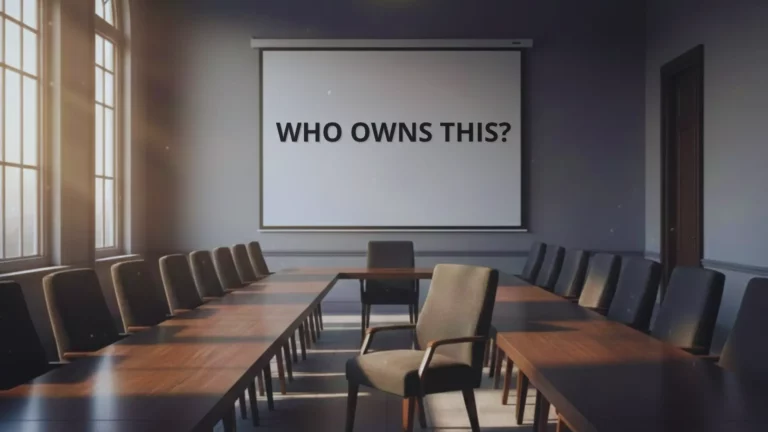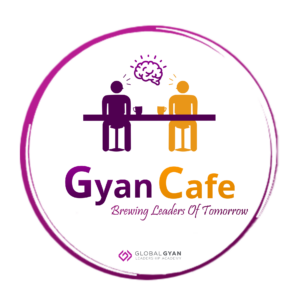Hiring creative people is easy but managing them is not! Do you agree?


Deepti, the director of a dynamic digital marketing firm called DesignComm, faced a formidable challenge in steering her team of talented yet unorthodox creative professionals. When Pranav, her top graphic designer, proposed an audacious advertising campaign for a high-profile client that could potentially redefine the brand’s identity, Deepti found herself at a crossroads.
So, what was this audacious proposal, you wonder?
Well, Pranav suggested using abstract graphics and bold typography in the ad designs, deviating from the client’s otherwise carefully crafted traditional and conservative brand image. In fact, Deepti had been on the team that masterminded this image makeover for the client. She therefore wondered if proposing something significantly different from the client’s expectations, which could potentially alienate them in the process, was a risk worth taking.
A few other challenges also cropped up in her mind:
- Agency Reputation: DesignComm has built a reputation for delivering innovative yet strategically aligned design solutions. Deepti needed to weigh the potential impact of Pranav’s unconventional proposal on the agency’s reputation and client relationships.
- Creative Freedom vs. Strategic Alignment: Deepti valued Pranav’s creativity and wanted to foster an environment where her team feels empowered to think outside the box. However, she also recognised the importance of aligning her team’s creative efforts with the client’s objectives and the agency’s strategic goals.
And Deepti is not alone in this pursuit. Striking a balance between encouraging people like Pranav’s creativity with meeting the agency’s strategic objectives and client expectations epitomises the delicate tightrope walk that managers of creative individuals often find themselves on.
A survey found that creativity is one of the most important qualities for success. A study found that managing creative teams well can bring tremendous benefits to an organization — from increased profitability to greater resilience in the face of change.
So, as a mid-level manager, how often are you tasked with a challenging yet exhilarating role: leading creative teams to drive innovation and maintain a competitive advantage?
To effectively lead such teams and address challenges such as those faced by Deepti, managers can employ a range of strategies that not only foster creativity but also ensure that it aligns with organizational goals.
Understanding the Unique Creative Needs
Each creative individual possesses a distinct set of triggers and barriers to their creativity. Leaders like Deepti must adeptly identify these idiosyncratic nuances. This personalised approach not only boosts morale but also enhances productivity. For instance, granting flexible work hours to a nocturnal graphic designer could yield superior outputs, a notion talked about in a study says, ‘the freedom to choose how to accomplish tasks, is shown to have a positive impact on individual creativity’.
Cultivating an Environment of Creativity
Cultivating an environment conducive to creativity entails more than merely providing open spaces and writable walls. It involves establishing a culture that views failure as a stepping stone to innovation. Google’s renowned ‘20% time’ initiative, encouraging employees to dedicate 20% of their work hours to side projects, has spawned successful products like Gmail and AdSense, underscoring how autonomy can fuel creative triumphs.
Aligning Creativity with Organisational Objectives
The paramount challenge in leading creative individuals lies in aligning their adventurous endeavours with the strategic goals of the business. Leaders must articulate how each project contributes to the overarching vision, ensuring that their creative team members comprehend the impact of their role in the organisation’s triumph. Employing SMART goals for projects can elucidate expectations and gauge creative success in business terms, thus preserving a clear trajectory.
Encouraging Collaborative Creativity
While creativity is often perceived as a solitary pursuit, collaborative creativity can yield ground-breaking innovations. Facilitating team brainstorming sessions where ideas are freely exchanged, discussed and acted upon can pave the way for new avenues of growth and development.
Cook on tapping ideas from all ranks once told a story of an analysis of innovations at Google:
“Its founders tracked the progress of ideas that they had backed versus ideas that had been executed in the ranks without support from above and discovered a higher success rate in the latter category.”
Adaptive Leadership
Leading creative professionals often entails traversing a landscape that is laced with passion, intuition and generation of quirky ideas. Leaders like Deepti need to be flexible, patient, and oftentimes, ready to embrace unconventional methodologies to attain conventional success. They also must be prepared to pivot strategies, sometimes radically, to harness the full potential of their creative teams. In essence, Deepti’s role as a leader transcends mere oversight; it demands her to be part conductor, part coach and part visionary. Adaptive leadership facilitates the adept harnessing of the dynamic potential of creative teams without stifling their innovative impulses.
This framework can facilitate the adept harnessing of the dynamic potential of creative teams without stifling their innovative impulses.

Creativity is the fire that lights up an organization and powers its success. But, just like actual fire, it must be carefully managed to avoid fizzling out or running wild. To achieve that, it must be neither overly dampened nor overly fuelled.
Here are a few actionable strategies that managers like Deepti can use to lead creative people who like to challenge quotidian activities.
1. Fostering a Culture of Open Communication
Encouraging open communication is vital in managing creative teams. This includes regular check-ins, open forums for sharing ideas and encouraging feedback. Creating a psychologically safe environment where team members feel comfortable expressing their thoughts and ideas without fear of ridicule or reprimand is crucial.
- Weekly Check-Ins: Schedule weekly one-on-one meetings with team members to discuss ongoing projects, challenges, and ideas.
- Idea Sharing Sessions: Organize monthly brainstorming sessions where team members can freely pitch new concepts.
- Feedback Mechanism: Implement a structured system for providing constructive feedback, which could include peer-to-peer reviews and manager feedback sessions.
2. Structured Creative Freedom
Balancing freedom with structure can be challenging but essential for managing creative teams. Providing clear guidelines and objectives while allowing flexibility in how those objectives are achieved can lead to innovative outcomes.
- Clear Objectives: Set clear, achievable goals for each project to ensure everyone understands the expected outcomes.
- Flexible Methods: Allow team members to determine how they meet these objectives, encouraging creative approaches.
- Regular Updates: Use tools like Asana or Trello to track project progress without micromanaging, fostering a sense of ownership and accountability.
3. Promoting Intrinsic Motivation
Motivating creative individuals intrinsically by aligning project roles with personal passions and career aspirations can significantly enhance creativity. This involves understanding what drives each team member and providing opportunities that cater to these drivers.
- Personal Development Plans: Develop individual career plans that align with both organizational goals and personal interests.
- Skill-Based Assignments: Assign tasks based on individual skills and interests to keep team members engaged and motivated.
- Recognition Programs: Implement a recognition program that celebrates creative achievements and milestones.
Several India Inc. companies, including HCL, Ericsson, Vodafone, ITC, LinkedIn India and Microsoft have gone a step further in the motivation chapter and surprised their employees by reaching out to their near and dear ones directly with stories about their achievements and career milestones.
Families influence the employees and their well-being affects the employee’s work life.
– Anil Sharma, Executive Vice President – Human Resources & Talent Development, ITC Hotels
4. Transformational Leadership Practices
Adopting a transformational leadership style can greatly benefit creative teams. This involves being an inspirational role model, challenging employees to think differently, and providing personalized mentorship to foster professional growth.
- Inspirational Vision: Regularly communicate a compelling vision that connects daily activities with long-term goals.
- Intellectual Stimulation: Encourage team members to challenge existing norms and come up with innovative solutions.
- Individualized Mentoring: Offer tailored coaching sessions to help employees develop new skills and advance their careers.
Satya Nadella, CEO of Microsoft, is known for his transformational leadership style, which has been instrumental in revitalizing the company’s culture and innovation output. His focus on empathy and empowering employees has led to significant growth and creativity at Microsoft.
These strategies accompanied by real-world examples and supporting tools, can help managers successfully lead creative teams. Leaders who need to go beyond the confines of conventional management must craftily blend inspiration and direction. Deepti’s journey underscores that effective creative leadership transcends fostering creativity—it’s about moulding said creativity into the pivotal driving force behind organisational success.
We leave you with an insightful thought highlighted in one of our strategy workshops:
“Leaders must serve as both initiators and collaborators, channelling the creative energies of their teams toward strategic goals while preserving the spirit of innovation.”
What innovative methods could you implement in your organisation to balance the free-spirited nature of creative work with the structured demands of business objectives? Share your valued experience and strategies in the comments section below!






Responses